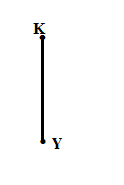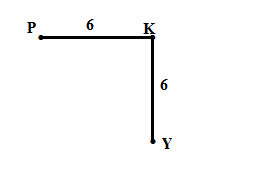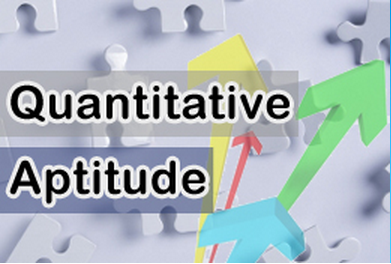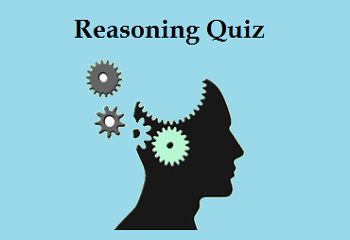Hello Aspirants. Welcome to Online Quantitative Aptitude section in AffairsCloud.com. Here we are creating question sample From DATA SUFFICIENCY topic, which is common for all the competitive exams. We have included Some questions that are repeatedly asked in exams !!!
Directions (1-10):
(A) If the data in statement I alone is sufficient to answer the question.
(B) If the data in statement II alone is sufficient to answer the question.
(C) If the data either in statement I alone or statement II alone are sufficient to answer the question.
(D) If the data given in both I and II together are not sufficient to answer the question.
(E) If the data in both the statements I and II together are necessary to answer the question.
- How many days did Bhawna take to complete his work?
I. Preeti correctly remembers that Bhawna took more than 4 days but less than 11 days to complete the work.
II. Kirti correctly remembers that Bhawna took more than 9 days but less than 15 days to complete the work.(E) If the data in both the statements I and II together are necessary to answer the question.
Explanation:
From I : 5 or 6 or 7 or 8 or 9 or 10 days
From II : 10 or 11 or 12 or 13 or 14 days
From both statements, only 10 is common in them, so Bhawna took 10 days which is predicted from bot statements. - What is A’s position from the right end in a row of 30 students?
I. A is third to the right of B, who is twelfth from the right end.
II. H is 14th from the right end of the row and there are eight students between H and A.(A) If the data in statement I alone is sufficient to answer the question.
Explanation:
From I : B is at 12th position from right, A is third to right of B, so A is 9th from right end.
From II : H is at 14th position from right, with 8 students in between A and H – it is not sure than A is left of H or right of H, so A’s position cant be predicted. - What is the code of ‘7’ in a certain code?
I. ‘734’ stands for ‘DH%’ and ‘348’ stands for ‘D*%’ in that code.
II. ‘127’ stands for ‘H*$’ and ‘375’ stands for ‘&@H’ in that code.(C) If the data either in statement I alone or statement II alone are sufficient to answer the question.
Explanation:
From I : code for ‘7’ is %
From II : code for ‘7’ is %
So it can be predicted from both alone. - How many floors does the building have (including ground floor)?
I. There are 3 families in the building and no two families live immediately above or below each other.
II. The area in which building is built has a rule that a building cannot have more than 4 floors (including ground floor).(E) If the data in both the statements I and II together are necessary to answer the question.
Explanation:
From I : Suppose 1 family stays on ground floor, then the other should be on 2nd floor, and then third family on 4th floor, or there can be any other arrangement such no two families are on adjacent floors.
From II : Maximum of 4 floors means that the building can have 0 or 1 or 2 or 3 or 4 floors.
But if both statements are combined, which says that there are 3 families and they do not stay on alternate floors and maximum can be 4 floors, it is predicted that there are 4 floors in this building. - What is the distance between points P and Q?
I. Point Y is exactly midway between points P and Q. Point Y is 6 km towards South of point K.
II. Point P is 6 km towards the West of point K.(E) If the data in both the statements I and II together are necessary to answer the question.
Explanation:
From I :
From I and II :
So PY = √62+62
So PQ = 2*PY - How is A related to B?
I. B is the only brother of R, whose father is Q.
II. A is the only son of G, who is only sister of R.(E) If the data in both the statements I and II together are necessary to answer the question.
Explanation:
From I : Q is the father of both B and R, R has only 1 brother
From II : G is sister of R, and A is G’s son
So from both statements, B , R and G are brothers and sisters. B is brother. G is sister, so B is A’s uncle. - Who is the heaviest among A , B, C, D and E?
I. D is heavier than B and C. C is heavier than A and E is not the heaviest.
II. E is heavier than A and D is heavier than only B.(A) If the data in statement I alone is sufficient to answer the question.
Explanation:
From I : we do not get any order but it is for sure that D is heaviest
From II : we get B is lightest in weight, but nothing else. - Which direction is Puneet facing?
I. If Puneet turns 135o to his right, he will be facing West.
II. If Puneet turns 45o to his right, he will be in the opposite direction of Suresh who is facing North.(C) If the data either in statement I alone or statement II alone are sufficient to answer the question.
Explanation:
From I : If Puneet is facing South East and turns to right 135o, he will face West
From II : If Puneet is facing South East and and turns to right 45o, he will face South which is opposite to North. - What is A’s position from the left end in a row of children facing South?
I. B is tenth to the left of A and fifteenth from the right end of the row.
II. There are 44 children besides A in the row.(E) If the data in both the statements I and II together are necessary to answer the question.
Explanation:
From I : B is at 15th position from right, A is 10th to right of B, so A is 5th from the right but we are not able to know the position from left.
From II : There are 45 children in the row.
From both statements, A is 41st from left end. - A, B, C, D, and E are sitting in a row. Who among them is in the middle?
I. C is sitting on the immediate right of who is sitting on the immediate right of B
II. C and E always sit together with a condition that one of them will necessarily occupy the right end.(D) If the data given in both I and II together are not sufficient to answer the question.
Explanation:
From I : No relation
From II : Only C and E can be placed, so in the middle A or B or D
AffairsCloud Recommends Oliveboard Mock Test
AffairsCloud Ebook - Support Us to Grow
Govt Jobs by Category
Bank Jobs Notification





